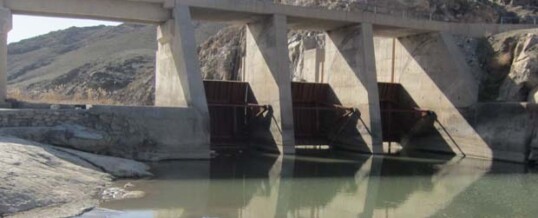
Response by Ron Schatz to a guest blog by Nipa Banerjee
February 2, 2015
On January 5, 2015, we posted a guest blog by Nipa Banerjee that was critical of Canada’s aid program in Afghanistan. Ron Schatz, who was CIDA’s Development Director at the Provincial Reconstruction Team (PRT) in Kandahar city from September 2007 to August 2008, has a different point of view.
I met with the Independent Panel on Canada’s Future Role in Afghanistan when they came to the PRT in late 2007 and was supportive of the notion of CIDA expanding its programming in the province, including the strategic Arghandab Irrigation Rehabilitation Project as a ‘signature project’ identified with Canada.
Banerjee suggests that CIDA somehow denied the Afghan government of ‘serious involvement or ownership’ as per the 2005 Paris Declaration on Aid Effectiveness. To the contrary, all three of the ‘signature projects’ were undertaken with the full agreement of the Government of Afghanistan. In the case of the Arghandab Irrigation Rehabilitation Project, a request from then President Hamid Karzai that was followed by a Memorandum of Understanding that clearly described the scope of Canada’s involvement.
CIDA’s education program was in direct response to a request from then Education Minister Mohammad Haneef Atmar in late 2007. CIDA largely funded its 50-school repair and construction program through EQUIP, the Education Quality and Improvement Project, administered through a Trust Fund jointly managed by the World Bank and Afghanistan’s Ministry of Education. At the provincial level we worked closely with the Department of Education in identifying and implementing their priorities for school location by district.
With regard to polio eradication, a regional initiative led by WHO and UNICEF, at the PRT we coordinated our efforts with the Ministry of Health out of necessity because that is what you have to do in an active insurgency. We relied on hundreds of Afghan volunteers to carry out monthly vaccinations of children. The polio virus has not yet been eradicated, but without all of our efforts the situation would be much worse today.
Banerjee is very critical of CIDA’s role in the Arghandab Irrigation Rehabilitation Project. By way of background, CIDA’s Technical Appraisal Mission (2007) recommended a two-phase approach: one, to reduce water losses and improve the conveyance capacity of the extensive canal system that was clogged with tons of silt and debris; and two, to increase the reservoir capacity behind the dam. CIDA committed only to the first phase.
In spite of the security risk related to the Taliban insurgency, the results of the project are encouraging and a credit to all those who served in Kandahar, certainly not the picture of failure as painted by Banerjee.
Implying incompetence on CIDA’s part as she seems to do, it was not that ‘CIDA planners missed the obvious’. AIRP Phase 1 was urgently required and the costs beyond Phase 1 were estimated at the time at $120 million. Looking at more recent estimates put forward by the US Army Corps of Engineers, the actual raising of the dam wall and other works will cost between $100 million and $250 million. These costs were and remain beyond the capacity of Canada alone.
Banerjee states that ‘The inability of Canada and its allies to deliver tangible services in the region has in fact resulted in the growth of popular support for the Taliban.’ There is no substantiation to this serious allegation in the Stars and Stripes linked article. It is unclear what ‘facts’ she refers to.
Banerjee’s blog post states that CIDA’s efforts were politicized into prescriptive and self-serving projects and she tops that off with the tired bromide about turning over the reins to state institutions while never acknowledging their weaknesses, corruption and the lack of capacity that often exists at central and provincial levels.
Kandahar Province was a foreign policy priority of the Government of Canada and, I might add, our soldiers were dying there, so there was bound to be a strong political element that made it significantly different from Banerjee’s work in earlier times in Afghanistan.
Nipa Banerjee replies:
If Canada could not afford heightening of the Dam, it would have been wiser in the first place not to repair canals that require water for channeling to farmlands. My very recent conversation with Afghanistan government officials confirms that investment in canal repairs first was a ‘waste’.
Afghan officials state that farmers in the area resent the unfulfilled promises of water by government and donors. Such attitudes draw people’s support away from the central government; and do nothing to establish its legitimacy, a primary donor objective. Plentiful evidence exists confirming that the Taliban insurgency in Kandahar has increased dramatically since 2007. Support from disgruntled villagers has strengthened the insurgency.
Afghan officials confirm that no signature project was ‘on budget’ or accounted for in their government’s budget process, demonstrating the extent of government’s involvement in donor-financed programs and their effectiveness. Trust Fund projects are essentially ‘on budget’. Canadian signature schools in Kandahar were ‘off budget’ and, thus, were certainly not financed through the Trust Fund, as claimed.
Did avoidance of channeling finances through government’s budget help avoid corruption entirely? I know of one Canadian firm, implementer of a signature project in Kandahar, that was blacklisted by the World Bank for corruption.
I agree Canadian aid in Kandahar was deeply politically motivated. The politicization of aid has obvious pitfalls, which was the main point of my article.
